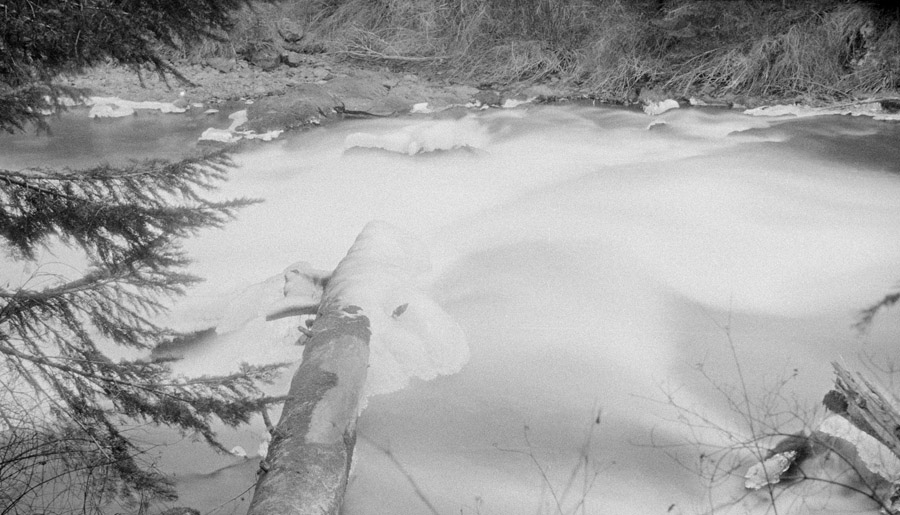Curve Control Limitations
January 8, 2012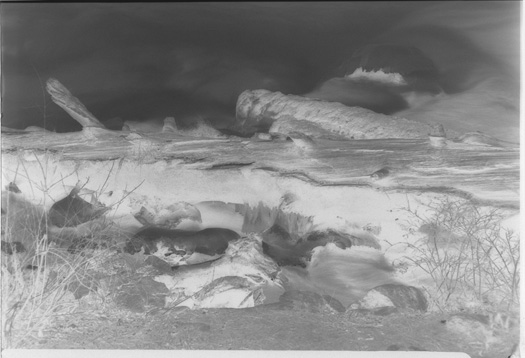
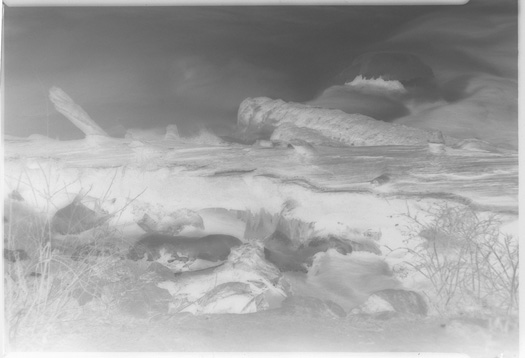
The old rule-of-thumb adage, "expose for the shadows, develop for the highlights" is sound enough to live by. Still, there are limitations to how far film can be pushed and pulled — even flexible artisan emulsions. The negative on the upper left is the negative for the image at the top of the page on Dec. 29. It was shot at f/8 and 1 second and developed for six minutes in a strong developer — straight stock solution of "Defender55Dwr" (my adaptation of the classic recipe.) here. It is an excellent negative. The negative on the upper right was actually given one stop more exposure (f/5.6 and 1 sec) but developed 1:1, stock to water, for six minutes.
The bottom negatives were given far more exposure. The one on the left got 8 seconds at f/11. The one on the right got 8 seconds at f/8. Both were developed in the same 1:1 tray as the upper right. The difference is the time in the developer — 3 minutes and 10 minutes. The results of the various interplays pretty much speak for themselves. What isn't obvious is that although the lower negatives look like they have good density range and good detail, irradiation from over-exposure has ruined highlight detail. Density can be pulled back with the right developer, but blasted highlights are blasted highlights.
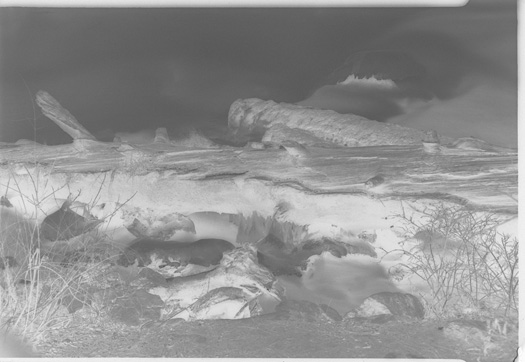
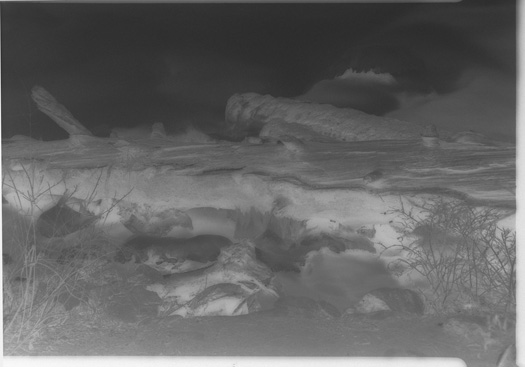

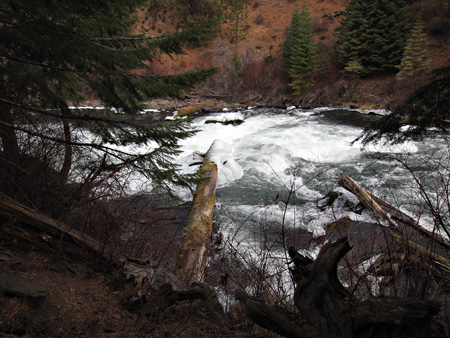
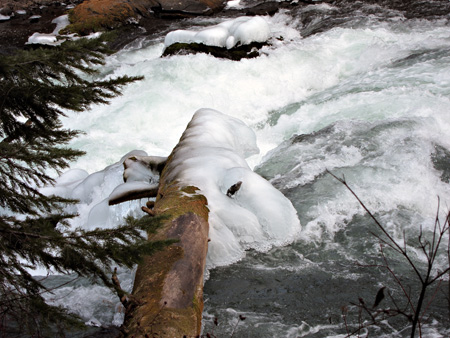
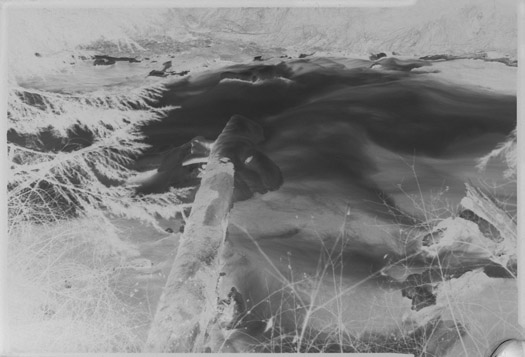
This scene was chosen strictly for its educational potential. I was interested in two things going on — the extreme lighting and the juxtiposition of the frozen water and the swiftly moving water, rendered of course as a blur by slow exposure.
At f/11 and 1 second, the negative to the left is well-exposed for the water and ice, but underexposed for the rest. Beyond a crop and invert, the print image is a straight application of "auto-levels".
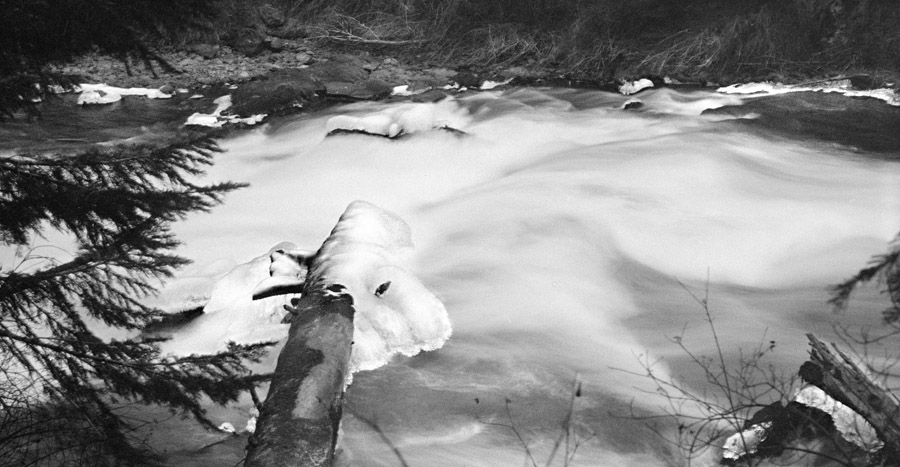
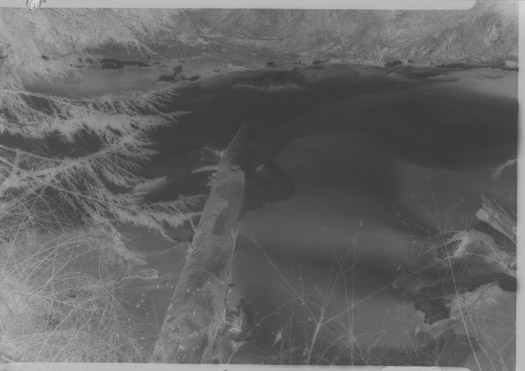
This negative exposed well for the dark areas surrounding the water — at the expense of highlight details. The blurred water isn't so much harmed by this, but the beautiful sparkles off the ice are lost and it is even hard to tell that there is ice trapped on the log.
The negative was exposed at f/11 and 8 seconds, and was developed in Photographers' Formulary "BW65" 1:4, (a very low energy treatment) for 10 minutes.
The bottom line for me: I think I'm going to move up my timetable on combining two emulsions with different characteristics to see if it's possible to get a negative that will handle extreme lighting conditions.
